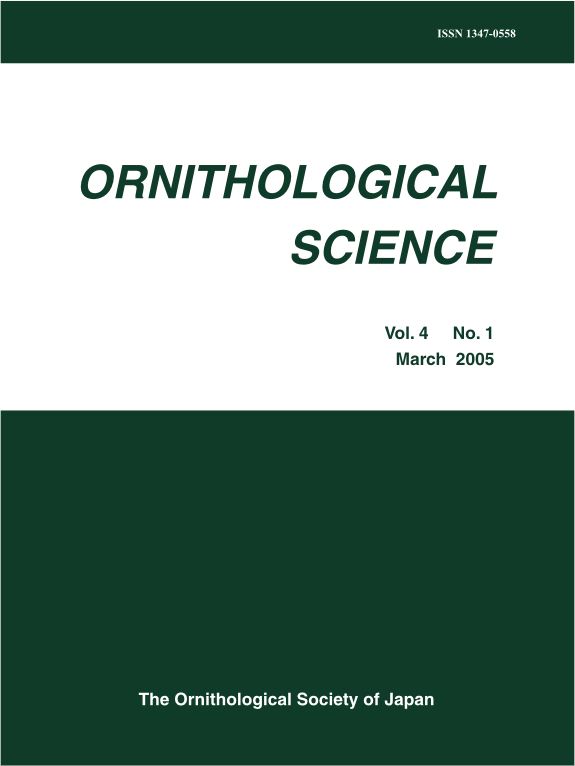Volume 8, Issue 1
Displaying 1-13 of 13 articles from this issue
- |<
- <
- 1
- >
- >|
SPECIAL FEATURE Birds of Madagascar
-
Article type: Special Feature
2009 Volume 8 Issue 1 Pages 1-3
Published: June 25, 2009
Released on J-STAGE: July 01, 2009
Download PDF (1251K) -
Article type: Special Feature
2009 Volume 8 Issue 1 Pages 5-13
Published: June 25, 2009
Released on J-STAGE: July 01, 2009
Download PDF (182K) -
Article type: Special Feature
2009 Volume 8 Issue 1 Pages 15-22
Published: June 25, 2009
Released on J-STAGE: July 01, 2009
Download PDF (4070K) -
Article type: Special Feature
2009 Volume 8 Issue 1 Pages 23-27
Published: June 25, 2009
Released on J-STAGE: July 01, 2009
Download PDF (4361K) -
Article type: Special Feature
2009 Volume 8 Issue 1 Pages 29-35
Published: June 25, 2009
Released on J-STAGE: July 01, 2009
Download PDF (4068K) -
Article type: Special feature
2009 Volume 8 Issue 1 Pages 37-42
Published: June 25, 2009
Released on J-STAGE: July 01, 2009
Download PDF (114K) -
Article type: Special Feature
2009 Volume 8 Issue 1 Pages 43-53
Published: June 25, 2009
Released on J-STAGE: July 01, 2009
Download PDF (154K) -
Article type: special feature
2009 Volume 8 Issue 1 Pages 55-66
Published: June 25, 2009
Released on J-STAGE: July 01, 2009
Download PDF (110K)
ORIGINAL ARTICLE
-
Article type: Original Article
2009 Volume 8 Issue 1 Pages 67-73
Published: June 25, 2009
Released on J-STAGE: July 01, 2009
Download PDF (970K)
SHORT COMMUNICATIONS
-
Article type: Short Communication
2009 Volume 8 Issue 1 Pages 75-79
Published: June 25, 2009
Released on J-STAGE: July 01, 2009
Download PDF (2116K) -
Article type: Short Communication
2009 Volume 8 Issue 1 Pages 81-86
Published: June 25, 2009
Released on J-STAGE: July 01, 2009
Download PDF (1183K) -
Article type: Short communication
2009 Volume 8 Issue 1 Pages 87-90
Published: June 25, 2009
Released on J-STAGE: July 01, 2009
Download PDF (66K)
ERRATUM
-
Article type: Erratum
2009 Volume 8 Issue 1 Pages 91
Published: June 25, 2009
Released on J-STAGE: July 01, 2009
Download PDF (21K)
- |<
- <
- 1
- >
- >|
